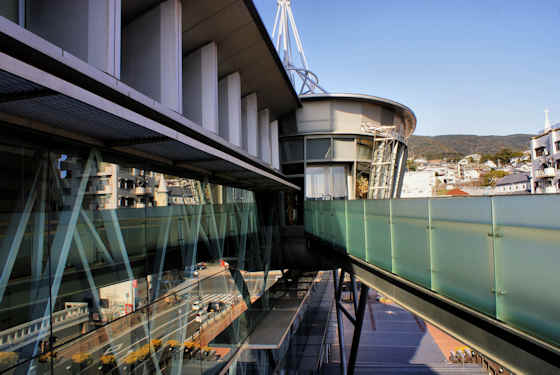The Saikai Bridge crosses the narrow Hario Strait which connects Omura Bay with the ocean. When built in 1955 it was the largest arch bridge in East Asia, and the 3rd largest in the world.
At its narrowest point of only 200 meters, the Hario Strait is known for the whirlpools and rapid tides that occur especially during the Spring and Autumn. Omura Bay also has another strait but it is much longer and narrower and looks like a river.
Shin Saikai Bridge, finished in 2006, crosses the strait nearby and carries a newer road. It is a Half-Through Arch Bridge with a total length of 520 meters.
The Saikai Bridge has a length of 316 meters and the roadway is 43 meters above the sea.
Between the two bridges is a park with 1,000 cherry trees that is very popular during the Spring Whirlpool Festival.
At first, I thought these were three chimneys, but it turns out they are radio transmission towers. The three 136-meter-high towers are laid out in an equilateral triangle with a side of 300 meters. They were completed in 1923 and the signal to the Imperial Navy to start the attack on Pearl Harbor came from these towers.
Also visible in the distance are the higher buildings of the Huis Ten Bosch theme park.
The previous post in this series on day 65 of my walk around Kyushu was of the precursor to Huis Ten Bosch, the
Nagasaki Holland Village.
































































